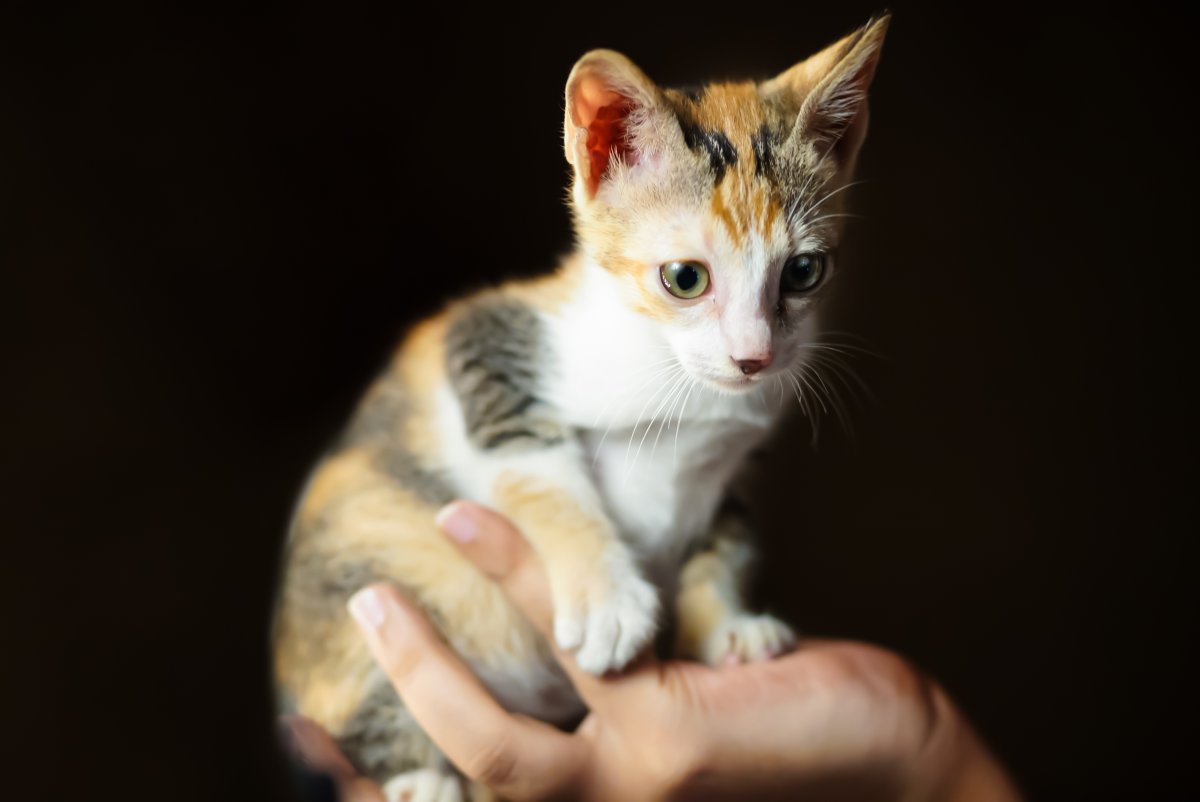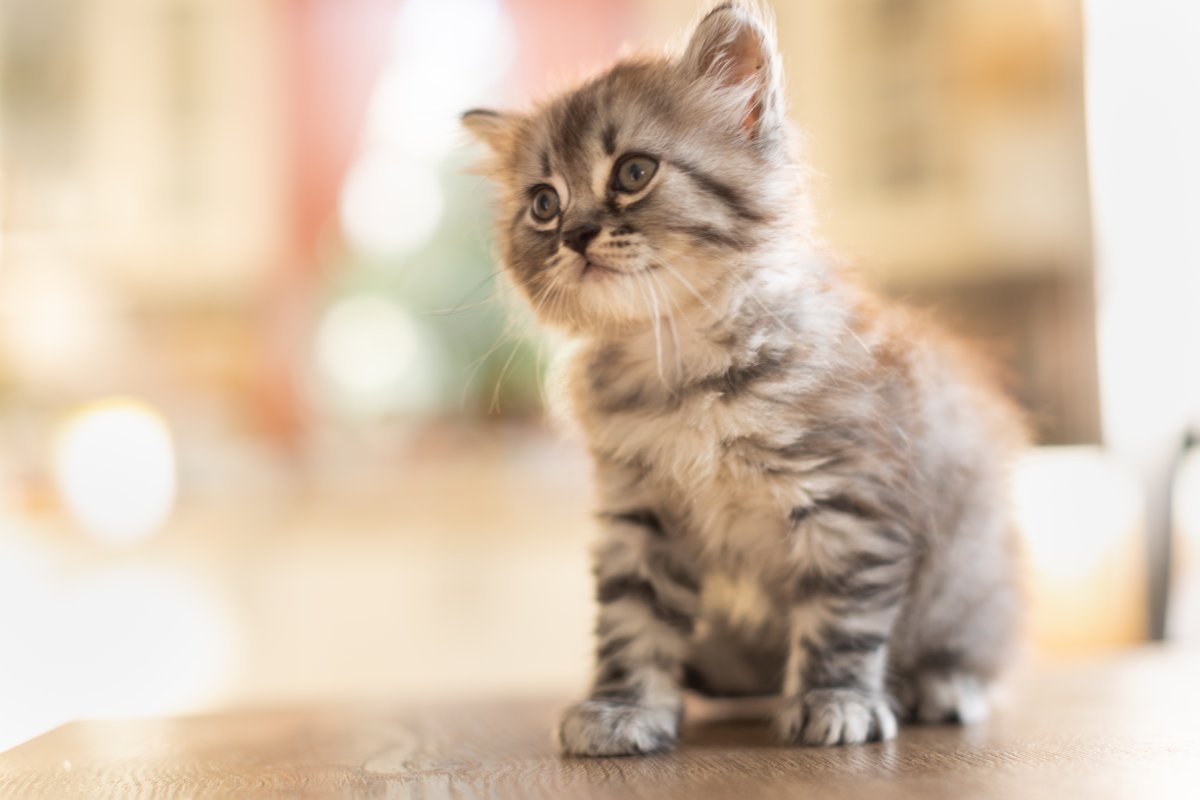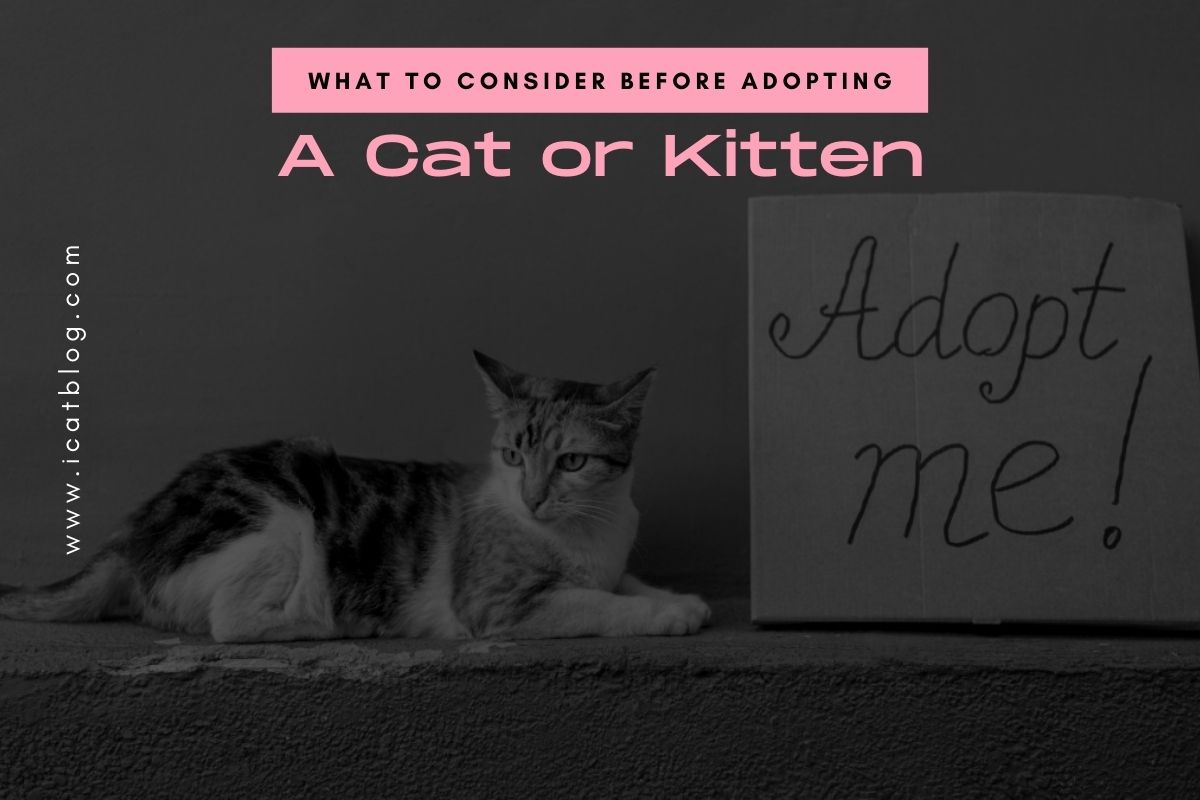Two of the most challenging things for felines are taking care of newly adopted stray kittens and then helping your older felines give birth to their kittens.
These times can be critical turning points for your family since new pets are being introduced to them. This is why it is important to do the right things during these periods and make these tumultuous times easy for yourself and your feline.
Looking after stray kittens
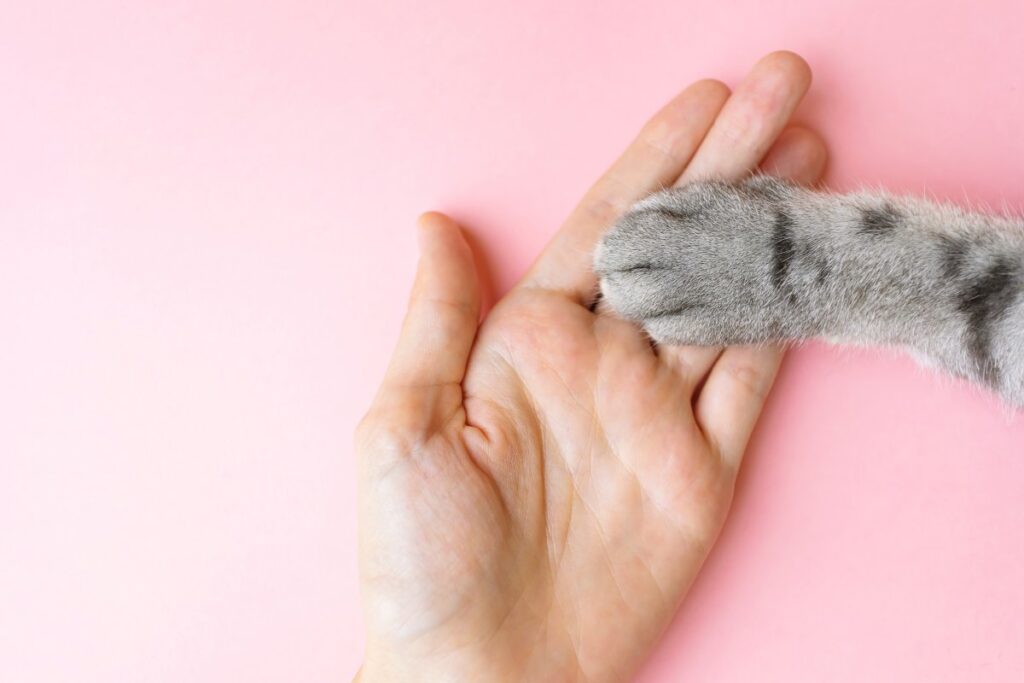
In the first part of this guide, we will talk about the essentials of looking after a newly adopted stray kitten. Stray kittens can be abandoned or may have gone through traumatic times before they met you. This is why there are certain preparatory steps you should take to make yourself ready for their arrival. Read this guide carefully, for you may need to buy a couple of things and make a few arrangements that can take a bit of time.
Keep it warm
One of the first things you would want to do when you find a stray kitten is to keep it warm. However, please do not put it in front of a heating device or gadget. Kittens can be extremely sensitive to temperature changes, so it is necessary to increase their body temperature gradually. If you feel that the kitten was out in the cold environment, place a snug towel or blanket around them. Then hold them close to your body so that your body heat gradually increases their body temperature.
Once you have taken these steps, keep the kitten in a litter box and place a blanket in the box. You do not need to turn on a heater on high heat since the kittens will adjust themselves automatically in a position where they feel comfortable. This will ensure that the little stray felines do not catch a cold and can properly recover from whatever harsh environmental conditions they were previously exposed to.
Keep the kitten separate for a while
When you have adopted a stray kitten, you do not know what kind of environment or substances it might have been exposed to. This is why keeping the kitten separate from the other pets and vulnerable people in your home is vital.
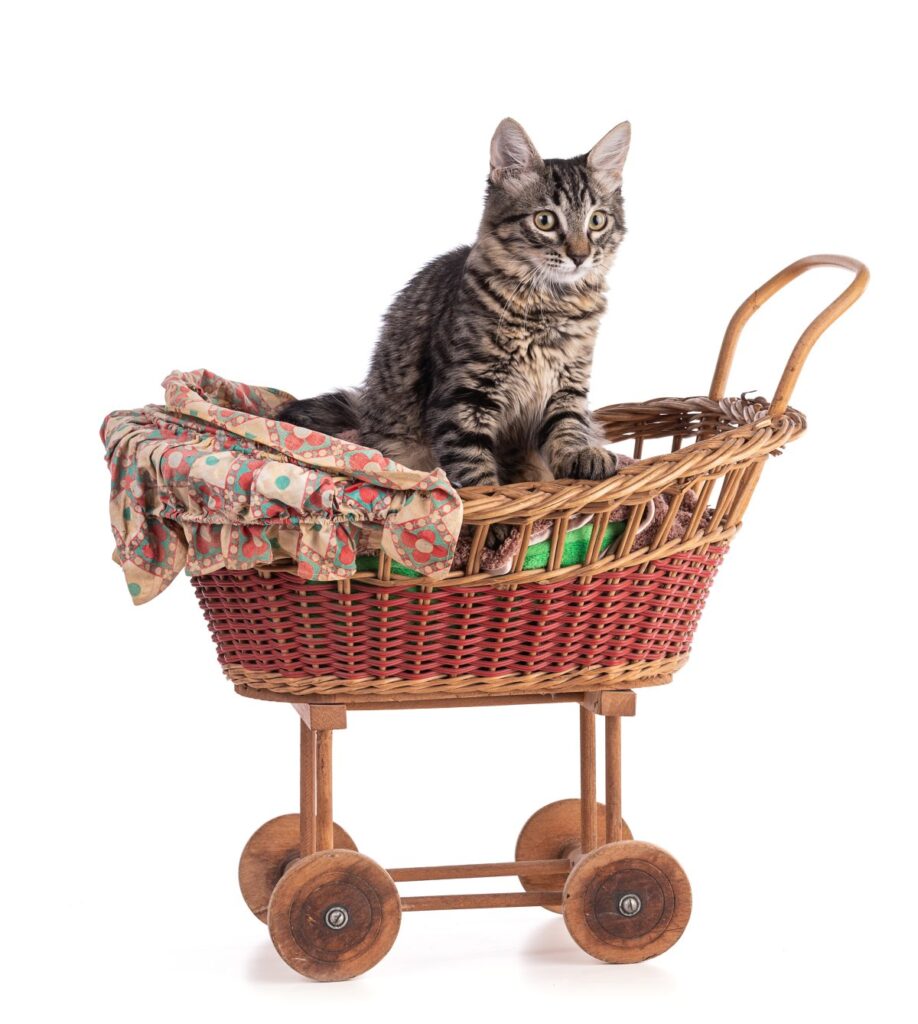
Before the kitten is vaccinated and properly checked, it could be carrying germs that could lead to illnesses. This does not mean that you need to be too scared of the kittens, but you do not want your other pets to catch these illnesses.
This is why ensure that none of your other feline or canine pets wander into the new kitten’s nursery before you get the green signal from the vet. In addition, keeping the kitten isolated for a while will help it acclimatized to the new environment.
Set up a nursery in a calm place
One of the key preparatory steps before bringing a stray kitten home is to set up a nursery for them. Yes, just like a human child, a stray kitten also needs a proper nursery in which it can spend its early days. Try to establish the nursery area in a relatively calm and peaceful area of your home.
We mean by calm is to try to make sure that your little toddlers or other pets do not come into that area of the home since your kitten can be scared by their presence at the start. Also, ensure there are some slightly dimly-lighted spaces in the room since kittens often find it more comfortable to stay in darker places than those with blinding lights.
In the nursery, set up a litter box for your stray kitten. Try to use a well-known brand of litter so that there is a lesser chance of it developing an allergic reaction to it.
Moreover, ensure that the litter is not too strongly scented since this can also put off the kitten from using the litter box. The whole purpose of establishing a nursery is to provide a haven of the kind for the kittens.
Remember that you have just removed the kitten from its birthplace. If you adopted an alone kitten, it has no family members around it either. It requires some time for them to get adjusted to a new setting, and allowing them to stay for a few days in a nursery will help them get used to the smells and sounds of your home.
Once they have adjusted, you can easily introduce them to the rest of the family. The transition will be much easier since it will not be too much shock for the kittens.
Do a preliminary check-up at home
Once you adopt a stray kitten, you will want to get it checked by a vet. However, it is also possible for you to carry out a basic preliminary check at home so that you can become aware of any immediate health issues. So if your kitten is healthy, it should have a somewhat regular sleep schedule and walk properly. The face and ears of the kitten should also appear clean.
One of the most important things to stay on the lookout for is checking whether your cat has diarrhea. At the same time, you can notice it if your cat defecates outside of its litter box. However, other times you can lift the tail of your kitten and check if it seems to have a runny tummy. We are stressing this because your kitten may not have had a proper diet before it came to your house.
This is why diarrhea is a common ailment amongst young kittens. Since it can cause extreme dehydration, it can be possible for a young kitten to die because of it. If you feel as if your stray kitten has diarrhea, you can feed it with water-based foods. Give it plenty of water to deal with the immediate signs of dehydration before you even visit a vet.
Plan a visit with the vet
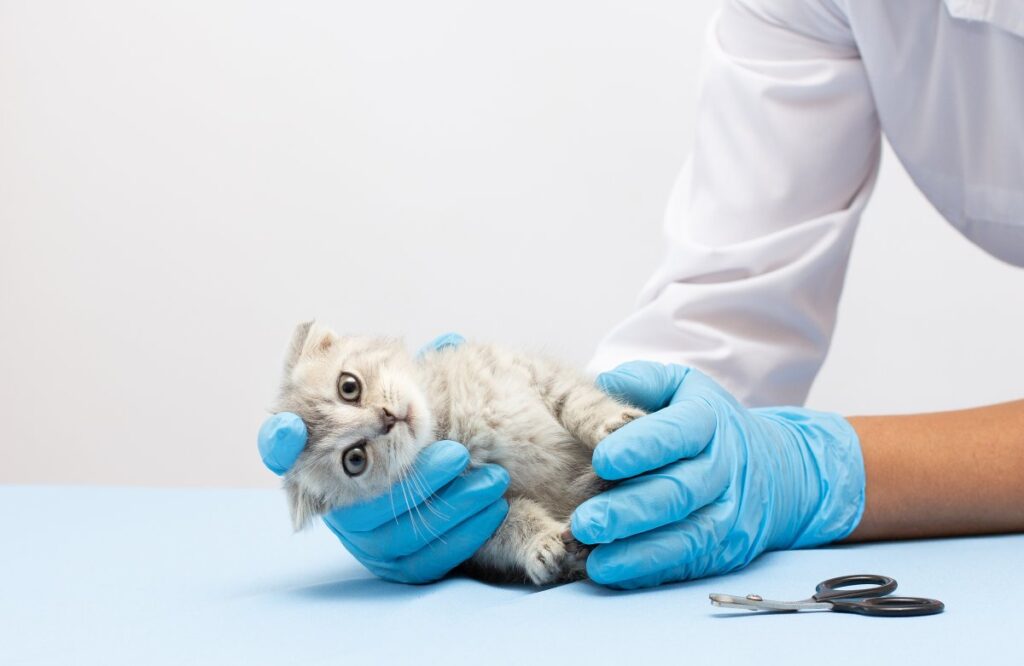
This is the most crucial step in our guide to looking after an adopted stray kitten. Visit a vet for a full-fledged checkup of your kitten. The vet will be able to tell you more about the breed of the kitten. In addition to this, he can tell you the kitten’s exact age and measure its height and body weight to see if the kitten is healthy. The vet will also examine your kitten to tell you if it suffers from any deficiency and what vitamins and supplements it may take.
Your vet will assist you in making a regular diet schedule for your kitten and give you more advice about how it can become healthier. It is mandatory to visit the vet sooner or later if you have a stray kitten. There may be many issues that you are not aware of and could prove potentially fatal for the little feline.
Introduce them to a feeding schedule
Once you adopt a stray kitten, it is very important to introduce them to a regular feeding schedule. At the outset, you should try to incorporate at least three meals into your kitten’s feeding schedule. If you do not want this, you can try something called “free feeding,” You keep the food in front of them and allow them to eat whenever they want to.
However, if you decide to put them in a routine, three small meals should be given until they reach six months of age, and you can reduce it to two afterward. Introducing a routine in terms of feeding will ensure that your kitten stays on schedule, and it will be easier for you and your feline in the long term. Feed your kitten at least twice a day.
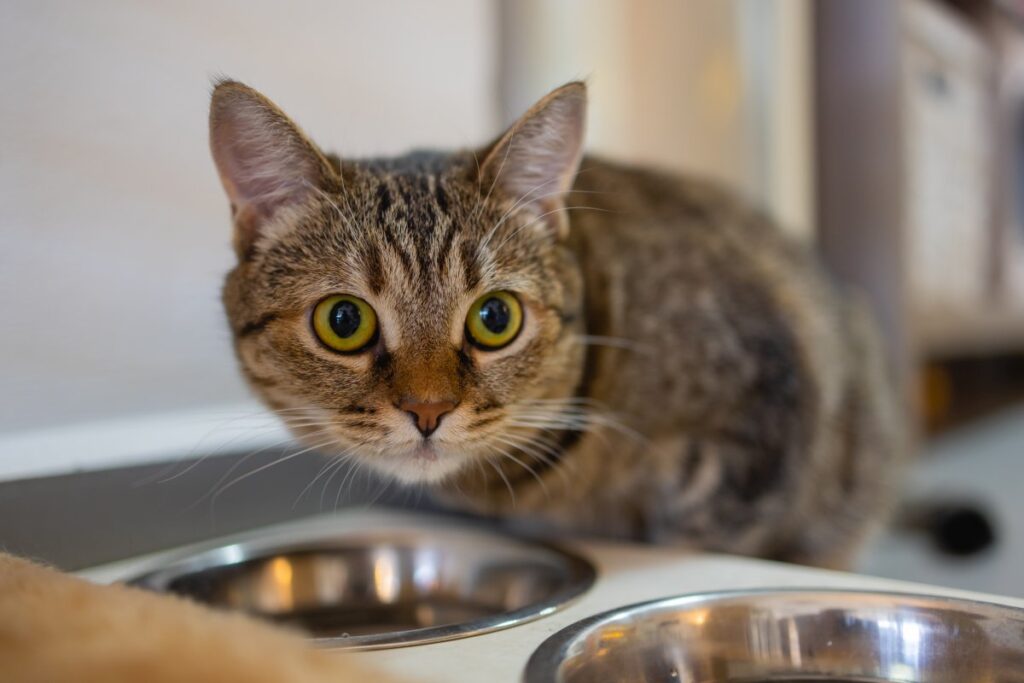
There are numerous cat food options available in the market, and they can range from canned to dry and semi-dry food. You must determine which foods you can afford in the long run and which foods provide the best nutrients necessary for your kitten’s growth. When your kitten is younger, it will prefer canned food since it is softer.
Moreover, kittens can only consume solid foods when they are older than three weeks. While canned foods are good, when your kitten grows older, you will want to give it dry food since it can help clean your kitten’s teeth. This is why we would suggest starting with canned food but then slowly introducing dry food into their diet so that the change is not too significant when they grow older. If your kitten does not seem to be eating much, but your vet found no health issue with it, try changing the brand or type of the food. There is a possibility that your kitten may not have liked that particular product.
While you can make cat food at home, the process can be more time-consuming and costly than simply buying ready-made food. More importantly, you may not incorporate all of the nutrients that your kitten needs since you cannot measure them the way commercial producers do. While you can make ice cubes of chicken broth to give to your kittens as a snack, our tip is to invest in ready-made food for regular consumption.
Further readings for you:
- Learn more about wet and dry food for cats
- It is important to balance wet and dry food for your cat
- Everything you neek to know about cat food
- How to differentiate between natural and organic cat food?
Keep a water bowl within their reach
Many people underestimate the importance of water when it comes to their kittens. They somehow believe that water is less critical for them. While it is true that many kittens do not drink too much water, it is vital to keep their supply of water clean and full. Kittens can be finicky, and if they feel the water is not clean or smells, they may not drink it and become dehydrated.
This is why they continuously fill their water bowls with clean water so that whenever they feel like drinking, they do not have to go too far to find water. This becomes even more important if you are feeding your dry cat food since it has no moisture that can hydrate your cat.
What NOT to do!

Whenever you adopt a stray kitten, there are certain things you should avoid doing in all circumstances. Firstly, never scold or get angry with the kitten if it does not seem to listen to you or has habits that do not suit you. For instance, your kitten may have trouble using the litter box initially, or it may not interact too well with the other felines in your house.
You need to understand that the kitten is in a new environment, and just like you, it is getting used to its new surroundings as well! Be patient with them and give them time. Chastise them, but never physically hurt them or throw something harsh at them. Secondly, do not immediately introduce them to the kids and other pets in your house. You never know what kind of trauma your kitten may have been through before you adopted it. It may also have some behavioral issues that need to be addressed, and it may lash out at strange new pets or kids who try to come close to them.
This is why introduce your kittens to new people and pets in a controlled, monitored environment at first. This way, if things start to get out of hand, you can immediately control them and separate them. However, do not physically intervene since you could get injured! Close the room door, or remove the kid/pet you can handle from the room. Once you are confident that the kitten has gotten used to these new people, you can let them stay together even if you are not at home.
How to prepare for a cat who is about to give birth?
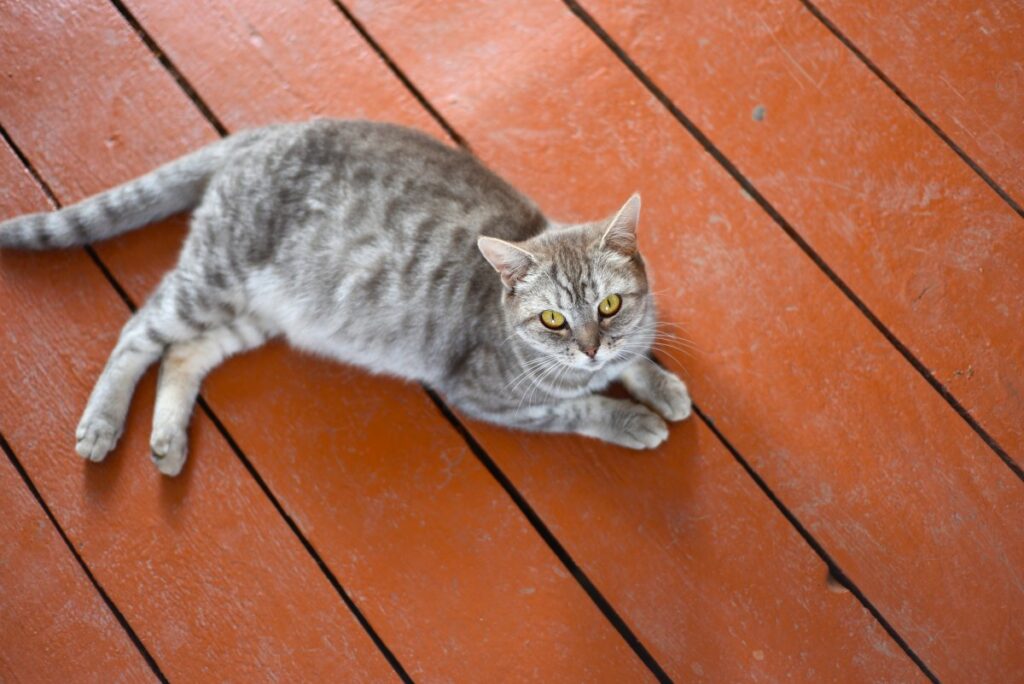
The second part of our guide will help you understand how you can assist your pregnant pet cat in giving birth to its litter of kittens. Giving birth can be a complicated process, even for cats, which is why you should make certain preparations beforehand to ensure that the process goes as smoothly as possible.
Do not worry; you won’t have to assist in the delivery itself! Cats are pretty good at that stuff and do that alone in the wild as well. However, there are certain steps where your involvement is needed to ensure that your cat and her kittens stay safe and healthy.
Dietary needs
Like pregnant humans, pregnant cats also have different nutrient requirements. Since cats are pregnant with multiple kittens at one time, the nutrients are distributed to these little unborn kittens, besides the mother cats, during their pregnancy. During the first and second trimesters of your pet cat’s pregnancy, her regular diet is enough to satisfy her nutrient need. However, as you progress to the final trimester, the kittens are getting bigger. The cat needs more food to cater to everyone’s nutrient needs.

At this period, you should try to switch to canned food which is nutrient-dense. This food is usually prepared for kittens since they need to have high-calorie food that keeps them active and agile. You can also use this same food for your heavily pregnant cat since she needs to have more vitamins and calories at this point of her pregnancy!
Prepare a warm room for her
As we have discussed before, cats are temperamental animals and often isolate themselves during difficult periods. Labor is a difficult time for your cat, which is why your feline will also need a room in which it can be alone during this period. Preparing a small room for your pregnant cat will make the process of labor easier for her since she will like to give birth in a place where she does not have people looking at her. Moreover, try not to make the room too bright.
Use a low voltage bulb, or keep the door a crack open to let the light come in, but extremely bright light can make your cat uncomfortable as well. So the labor room for your cat could be any free room in your house, and if you cannot manage that, a large wardrobe or storage space is also good.
Once you have found such a room, try to ensure that it stays warm. Cats like to give birth in a relatively warm place, so the ideal temperature is about 72 degrees Fahrenheit. If you have a humidifier or can control the space’s humidity in some other way, your pregnant cat would like to have 60-70 percent of moisture in the air.
You may be wondering why we are talking about things as specific as light, humidity, and temperature when it comes to cats giving birth. After all, cats give birth in the wild all the time, and conditions are not ideal over there! However, right now, we are talking about a loved pet cat.
While they often give birth and survive in harsh environmental conditions, once they become a part of your household, it is your responsibility to ensure they stay as comfortable as possible. Your cat may still be able to give birth if the conditions are not ideal, but providing a relaxing environment can aid the process.
Is there any equipment you need?
As a general rule, cats hardly need any help or human interference when they are giving birth. They can push the kittens out on their own and cut the umbilical cords themselves too. However, complications can occur in any pregnancy, and cat pregnancies are no exception either.
Keep a sterilized scissor with you so that if your cat is not cutting the umbilical cord of the kittens and appears unable to do so, you can intervene. However, if your cat seems aggressive when you approach her, we would suggest you take a step back and let the cat handle her kittens on her own.
In addition to sterilized scissors, you should also have some warm blankets with you. While your cat will keep the kittens warm by keeping it close to its body, you may want to cover up some of the kittens if their mother does not appear to pay much attention to them. Remember that newborn kittens can be extremely sensitive to heat and cold, and ensuring that they remain warm is crucial.
Get a kitten milk replacer
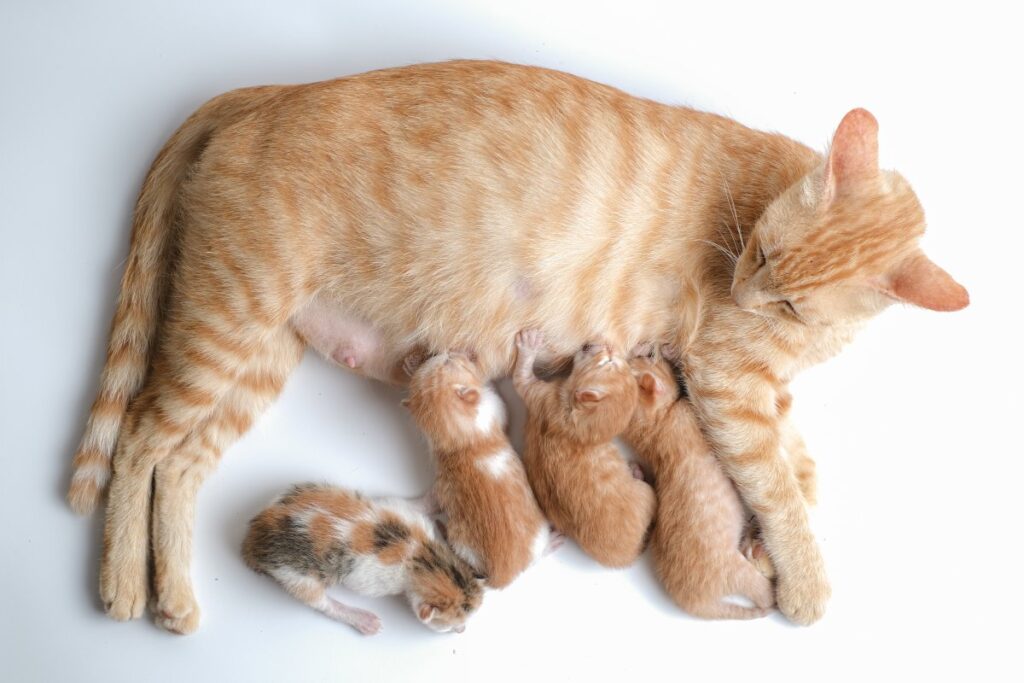
Cats usually feed their kittens themselves for the first few weeks after their birth. However, at times you may find your cat unable to do so. This could be because she has too many kittens to look after, and some get ignored. Inflammation and other problems with the mother cat could also make her averse to feeding her kittens. This is why it is important to buy a kitten milk replacement at the start.
The newborn kittens will need feeding soon after their birth. If the mother does not seem to be up for the job, the responsibility falls on your shoulders. A kitten milk replacement includes formula milk which contains all the necessary nutrients that a cat’s milk contains. Try and get a formula that contains colostrum since that is one of the essential nutrients for a newborn kitten.
Now, you may be confused as to how exactly you should feed a newborn kitten. After all, you cannot simply keep a bowl of milk in front of your kitten and expect them to provide themselves. For the first few weeks, the kittens will barely learn how to get around and walk in their environment.
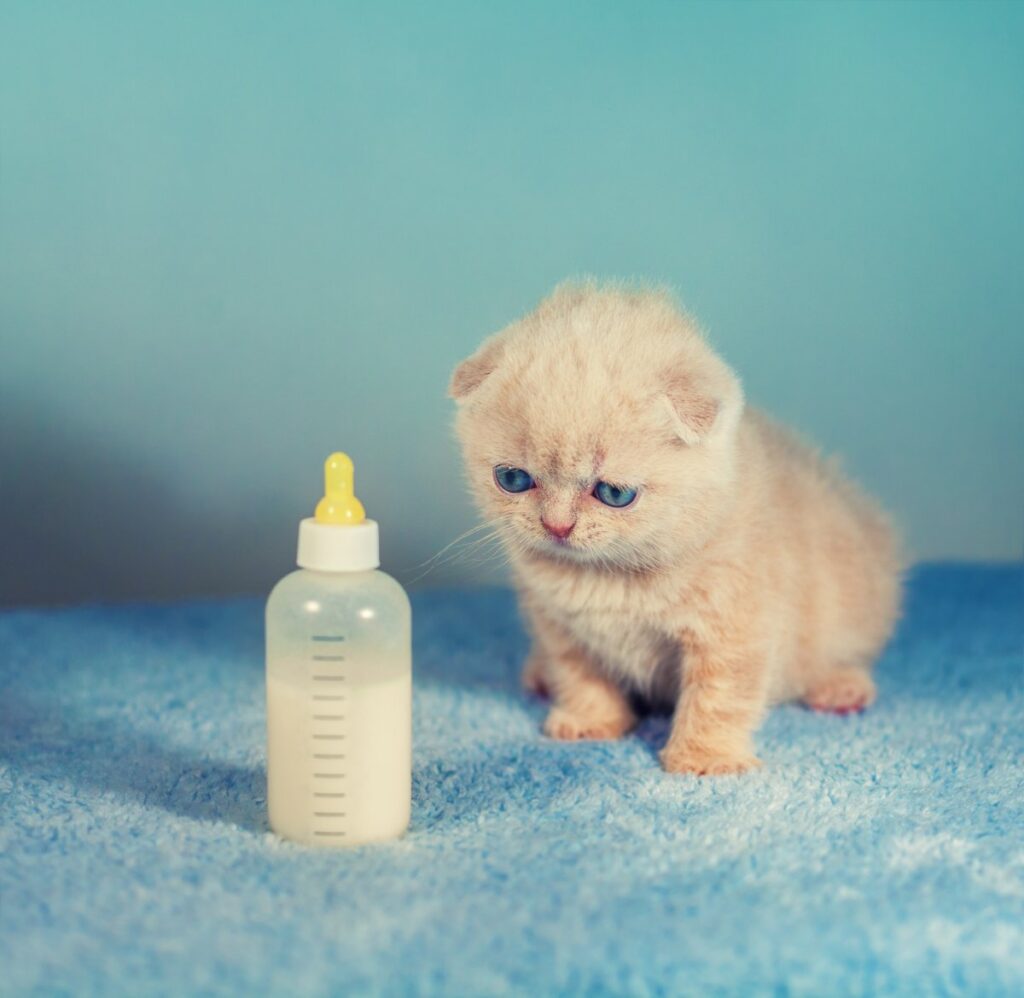
This is why you need to feed your kittens using a dropper. Place the dropper with the milk into their mouth gently and feed them till they are satisfied. You need to continue this process for at least four weeks, and then you will need an additional four weeks to wean them off. Buying a kitten milk replacement before your kitten goes into labor is unnecessary, but it is recommended. This is because if you find out suddenly that your cat is not feeding its kitten, you immediately have a substitute available for them. The kitten will not have to stay hungry for long.
Prepare a nesting box
A nesting box is an actual place where your pregnant cat will give birth. This place does not have to be too fancy. All you need is a cardboard box, but make sure the sides are not too high since the cat might not get inside in her pregnant condition. Line the box with a comfortable blanket and some newspapers. This is the place where your cat should feel comfortable enough to take her new kittens there and nurse them.
Also, ensure that there is no strong-smelling litter or newspapers in the nesting place. This is because too many scents can end up confusing newborn kittens! Remember that a newborn kitten’s sense of sight and hearing develops after some time. At first, they only recognize their mothers through scents, and if they smell too many things, they may not find the mother and may not be able to reach her for nursing.
Look for the signs before labor
Now that you have made all of the preliminary arrangements, you may want to know what to expect before your cat is about to give birth. Having some basic understanding of what your cat is going through will make you more aware of when the labor process will start. Allowing you to make the necessary last-minute arrangements.
Sometime before your cat is due to go into labor, you will start noticing some changes in its behavior. These changes can include your cat wanting to stay away from you or your cat following you around literally everywhere you go. This is because every feline behaves differently when it comes to giving birth. While some crave isolation at this point, others look to you for comfort. Another common sign that the labor process is about to start is that the cat may begin scratching itself.
This is not your everyday grooming kind of scratching and is slightly more aggressive. All of the signs indicate that your cat is feeling slightly uncomfortable now, and the labor process is about to start soon. You may also notice that your cat is being overly vocal and loud at this point. There is no cause for concern here since your cat is going through many physical changes right now.
Understanding the labor process
Right before labor starts, your cat will emit a red discharge. Please do not be worried about it; it’s a sign that the kittens are on their way. There are no visible contractions that can be seen when a cat gives birth, so seeing this discharge is essential. Once the process of labor starts, then you can see kittens popping out after intervals of 10 to 60 minutes. Your cat is pretty skilled, so it will be able to bite through the umbilical cords and placenta itself, so you will not need to intervene.
Also, remember not to scare your cat since that could prevent it from giving birth and delay the whole procedure by several days! However, call your vet if you think your cat is clearly in pain, and no kittens seem to be coming out. This is because, like human pregnancies, cat pregnancies can be complicated as well, and your cat may need a little bit of third-party help to give birth as well.
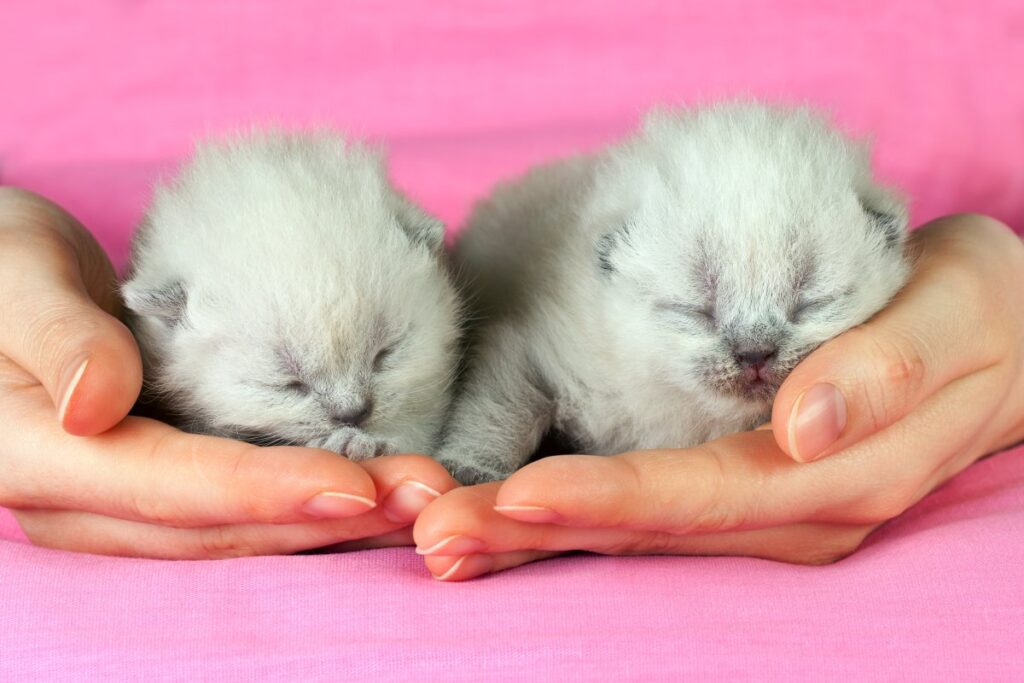
Once your cat has given birth, your home will also be the first home for newborn kittens. Whether you decide to keep the kittens or put them up for adoption, you need to ensure that the first few days of the new kittens are spent in comfort and peace. Try and leave the mother and children alone. This does not mean you do not check up on them; try not to intervene too frequently since the cat can feed and clean her kids herself.
Make the nesting place as comfortable as possible by putting newspapers and blankets in that place, and the kittens will make themselves warm with their mother’s help. Also, when you give your kitten up for adoption, make sure that the family adopting them is well-equipped to care for them and love them. Indeed, you do not want to send your beloved cat’s children to a place where they are not well-treated.
Finally!
We hope that our guide on looking after stray and pregnant cats has proven helpful for you. When it comes to stray kittens, you must look after them as well as you can so that they can recover their health and grow up in a stable, steady environment. Our tips on looking after stray kittens will help you prepare your home for their arrival and tell you how to look after them.
Our tips on looking after pregnant cats will help you be a responsible cat owner. You can look after their pregnant cat in a better way and ensure their well-being throughout the labor process. While cats are pretty good at giving birth themselves and looking after their young, even they could use a little help now and then. Our tips will help you cater to your feline’s needs in some of the most challenging times of its life!

